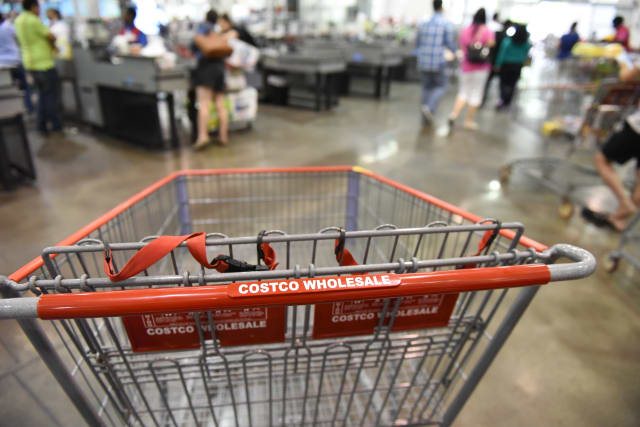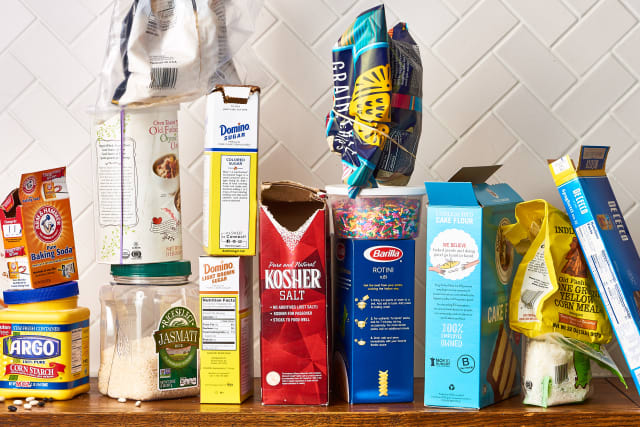This
post was originally published on
this sitehttp://www.marksdailyapple.com/
 As you and millions of other people embark on new dietary journeys, you’re going to hear a ton about calories.
As you and millions of other people embark on new dietary journeys, you’re going to hear a ton about calories.
“Calorie counting is everything.”
“If you aren’t counting calories, you won’t lose weight.”
“Just eat less calories than you expend.” For one, it’s “fewer.” Two, that’s not the whole picture.
These statements aren’t wrong exactly, but they offer an overly simplistic picture of the relationship between weight loss and calories. They ignore context. And context is everything, especially when you’re talking about calories and weight loss.
Most people (even many scientists) believe that the body composition challenge is a relatively simple equation: to lose weight you must reduce calories (either eat less or burn more), to gain weight you must add calories (eat more or burn less), and to maintain weight you keep calories constant (eat and burn identical amounts). Calories in over calories out.
Right away, it sounds preposterous. Are people really maintaining perfect caloric balance by dutifully tracking and comparing their intake to their burn? Are they walking six fewer steps lest they lose an extra ounce off their midsection?
Are All Calories the Same?
The truth is, it’s more like a complex equation where you have to factor in many other very important variables:
- Am I getting calories from fat, protein, or carbs?
- Am I getting my calories through whole foods or refined processed foods?
- Are my glycogen stores full or empty?
- When’s the last time I exercised?
- Am I insulin-sensitive or insulin-resistant?
- Am I trying to lose “weight” or lose fat?
- How’s my stress level?
- Am I sleeping enough?
The answers to all those questions (and more) affect the fate of the calories we consume. They change the context of calories.
Ideally, all that complexity is handled under the hood. That’s how it works in wild animals. They don’t calorie count. They don’t think about what to eat or how to exercise. They just eat, move, sleep, and somehow it all works. I mean, they die, often violently, but you don’t see obese, metabolically-deranged wildlife—unless the obesity and metabolic derangement is physiological, as in bears preparing to hibernate. Somehow they figure it out. They’ve delegated the complex stuff to their subconscious.
This is generally true in “wild humans,” too. Hunter-gatherer groups by and large did not and do not show any evidence of metabolic derangement, obesity, or the other degenerative trappings of modern humans living in civilization. They are fully human in terms of physiology, so it’s not that they have special genetic adaptations that resist obesity. They’re living lifestyles and eating diets more in line with our evolutionary heritage. They’re moving around all the time, not going through drive throughs. They’re eating whole unprocessed foods that they have to procure, catch or kill.
What they don’t have is the ridiculous concept of calories and macronutrients floating around in their heads, informing their dietary choices. They don’t even think about food in terms of calories, or movement in terms of calories expended. Metabolically speaking, they consume their calories in the proper context.
But you? You might have to think about context. You might have to answer those questions and create the proper context.
Most people do not think about context. They home in on the number of calories the food database claims the food they’re eating contains, plot it against the numbers of calories the exercise database claims the exercise they’re doing expends, and then wonder why nothing’s working. That’s why “dieting doesn’t work”—because, as practiced in accordance with the expert advice from up high, it doesn’t. Almost invariably, the people who see great results from strict calorie counting, weighing and balancing, those types who frequent online weight lifting forums and have the freedom to spend hours perfecting their program, have the other relevant variables under control without realizing it.
They’re younger, with fewer responsibilities—and less stress and fewer disruptions to their sleep.
They’re lifting weights and training religiously, creating huge glycogen sinks and maintaining optimal insulin sensitivity.
They’re eating a lot of protein, the macronutrient that curbs hunger and increases energy expenditure the most.
They’re eating mostly whole foods.
They’ve had less time on this earth to accumulate metabolic damage.
Not everyone is so lucky.
Fat burning, glucose burning, ketone burning, glycogen storage, fat storage, gluconeogenesis, and protein turnover—what we do with the calories we consume—do not occur at constant rates. They ebb and flow, wax and wane in response to your micronutrient intake, macronutrient intake, energy intake, exercise and activity habits, sleep schedule, stress levels, and a dozen other factors. All of these energy-related processes are going on simultaneously in each of us at all times. But the rate at which each of these processes happens is different in each of us and they can increase or decrease depending on the context of our present circumstances and our long term goals. All of these processes utilize the same gene-based principles of energy metabolism—the biochemical machinery that we all share—but because they all involve different starting points and different inputs as well as different goals or possible outcomes, they often require different action plans. We can alter the rate at which each of these metabolic processes happens simply by changing what and when we eat and addressing the non-dietary variables. We can change the context.
But don’t controlled trials demonstrate that a “calorie is a calorie”?
People hear things like “in controlled isocaloric trials, low-carb diets have never been shown to confer a metabolic advantage or result in more weight loss than low-fat diets.” While often true, they miss the point.
People aren’t living in metabolic wards with white lab coats providing and precisely measuring all their food. They’re living in the real world, fixing their own food. Free living is entirely uncontrolled with dozens of variables bleeding in from all angles. In the lab situation, you eat what they give you, and that’s that. The situations are not analogous—real world vs. controlled lab environment.
In real world situations…
Why a Calorie Isn’t Just a Calorie
The macronutrient composition of the calories we eat alters their metabolic effects.
The metabolism of protein famously increases energy expenditure over and above the metabolism of fat or carbohydrate. For a given caloric load, protein will make you burn more energy than other macronutrients.
Protein is also more satiating than other macronutrients. Eat more protein, curb hunger, inadvertently eat less without even trying (or needing a lab coat to limit your intake).
Protein and fat together (AKA “meat”) appear to be even more satiating than either alone, almost as if we’re meant to consume fat and protein in the same meal.
The isocaloric studies tend to focus on “weight loss” and discount “fat loss.” We don’t want to lose weight. We want to lose fat and gain or retain lean muscle mass. A standard low calorie diet might cause the same amount of weight loss as a low-carb, high-fat diet (if you force the subjects to maintain isocaloric parity), but the low-carb approach has been shown to increase fat loss and enhance muscle gain. Most people who lose weight with a standard approach end up losing a significant amount of muscle along with it. Most who lose weight with a low-carb, higher-protein-and-fat approach lose mostly fat and gain or retain most of their muscle.
Take the 2004 study that placed overweight men and women on one of two diets: a very low-carb ketogenic diet or a low-fat diet. The low-carb group ate more calories but lost more weight and more body fat, especially dangerous abdominal fat.
Or the study from 1989 that placed healthy adult men on high-carb or high-fat diets. Even though the high-carb group lost slightly more body weight, the high-fat group lost slightly more body fat and retained more lean mass.
Both describe “weight lost,” but which is healthier?
Whether the calories come in the form of processed or whole food determines their effect.
We even have a study that directly examines this. For two weeks, participants either supplemented their diets with isocaloric amounts of candy (mostly sugar) or roasted peanuts (mostly fat and protein). This was added to their regular diet. After two weeks, researchers found that body weight, waist circumference, LDL, and ApoB (a rough measure of LDL particle number) were highest in the candy group, indicating increased fat mass and worsening metabolic health. In the peanut group, basal metabolic rate shot up and neither body weight nor waist size saw any significant increases.
Your current metabolic state determines the effect of calories.
In one study, a person’s metabolic reaction to high-carb or low-carb diets was determined by their degree of insulin resistance. The more insulin resistant a subject, the better they did and the more weight they lost on low-carb. The more insulin sensitive a subject, the better they did and the more weight they lost on low-fat. Calories were the same across the board.
In another study, insulin-sensitive obese patients (a rarity in the general population) were able to lose weight on either low-carb or low-fat, but insulin-resistant obese patients (very common) only lost weight on low-carb.
Whether you exercise determines the effect of calories.
If you’ve just finished a heavy lifting workout followed by a sprint session, your response to a given number of calories will differ from the person who hasn’t trained in a year.
Training: Your muscle glycogen stores will be empty, so the carbs you eat will go toward glycogen storage or directly burned, rather than inhibit fat burning. Your insulin sensitivity will be elevated, so you can move protein and carbs around without spiking insulin and inhibiting fat release. You’ll be in hypertrophy mode, so some of the protein you eat will go toward building muscle, not burned for energy.
Not Training: Your muscle glycogen stores will be full, so any carbs you eat will inhibit fat burning and be more likely to promote fat storage. Your insulin sensitivity will be low, so you’ll have to release more insulin to handle the carbs, thereby inhibiting fat burning the process. You won’t have sent any hypertrophy signals to your muscles, so the protein you eat will be wasted or burned for energy.
How you slept last night determines the effects of calories.
A single night of bad sleep is enough to:
- Give you the insulin resistance levels of a diabetic. Try eating carbs in an insulin-resistant state and tell me a “calorie is a calorie.”
- Make the reward system of your brain light up in response to junk food and dampen in response to healthy whole food. The more rewarding you find junk food, the more your brain will compel you to eat more of it.
- Reduce energy expenditure. Your “calories out” drops if you sleep poorly.
And those are just a few important variables that determine the context of calories. There are many more, but this post has gone on long enough…
The Take-Home Message
If calorie-counting works for you, great! You’re one of the lucky ones. Own that and keep doing what you’re doing. You’ve clearly got a good handle on the context of calories.
If calorie-counting and weighing and measuring failed you in the past, you’re not alone and there’s a way forward. Address the variables mentioned in this post that need addressing. Do you need better sleep? Do you need to manage stress better? Could you eat more protein or fat, eat more whole food and less processed food, or get more exercise, or lift more weights, or take more walks?
Handle those variables, fix those deficiencies, and I bet that your caloric context will start making more sense. The trick isn’t to increase the number of variables you plug into your calories in/calories out formula. It’s to make sure all your lifestyle and dietary ducks are in a row so that the caloric balance works itself out.
By understanding how these metabolic processes work, and knowing that we can control the rates at which each one happens through our diet (and exercise and other lifestyle factors) we needn’t agonize over the day-to-day calorie counting. As long as we are generally eating a PB-style plan and providing the right context, our bodies will ease into a healthy, fit, long-lived comfort zone rather effortlessly.
So, what’s your caloric context looking like? Thanks for reading today, everyone.
Want to make fat loss easier?
Try the Definitive Guide for Troubleshooting Weight Loss for free here.
References:
Pontzer H, Wood BM, Raichlen DA. Hunter-gatherers as models in public health. Obes Rev. 2018;19 Suppl 1:24-35.
Claesson AL, Holm G, Ernersson A, Lindström T, Nystrom FH. Two weeks of overfeeding with candy, but not peanuts, increases insulin levels and body weight. Scand J Clin Lab Invest. 2009;69(5):598-605.
Volek J, Sharman M, Gómez A, et al. Comparison of energy-restricted very low-carbohydrate and low-fat diets on weight loss and body composition in overweight men and women. Nutr Metab (Lond). 2004;1(1):13.
Mccargar LJ, Clandinin MT, Belcastro AN, Walker K. Dietary carbohydrate-to-fat ratio: influence on whole-body nitrogen retention, substrate utilization, and hormone response in healthy male subjects. Am J Clin Nutr. 1989;49(6):1169-78.
Cornier MA, Donahoo WT, Pereira R, et al. Insulin sensitivity determines the effectiveness of dietary macronutrient composition on weight loss in obese women. Obes Res. 2005;13(4):703-9.
Ebbeling CB, Leidig MM, Feldman HA, Lovesky MM, Ludwig DS. Effects of a low-glycemic load vs low-fat diet in obese young adults: a randomized trial. JAMA. 2007;297(19):2092-102.
Benedict C, Hallschmid M, Lassen A, et al. Acute sleep deprivation reduces energy expenditure in healthy men. Am J Clin Nutr. 2011;93(6):1229-36.
***This article was substantially revised from the original version, which you can read here.
The post Are All Calories the Same? appeared first on Mark’s Daily Apple.



 As you and millions of other people embark on new dietary journeys, you’re going to hear a ton about calories.
As you and millions of other people embark on new dietary journeys, you’re going to hear a ton about calories.




 Good morning, folks! I’ve got a blog post coming up here soon, but let me share about an upcoming event I think you’ll be interested in. At the end of this month I’ll be speaking at the
Good morning, folks! I’ve got a blog post coming up here soon, but let me share about an upcoming event I think you’ll be interested in. At the end of this month I’ll be speaking at the  .
.



 For now classes are 6pm and 640pm at 2840 Wildwood st in the Boise Cloggers studio.
Book your class NOW!
click this ==>
For now classes are 6pm and 640pm at 2840 Wildwood st in the Boise Cloggers studio.
Book your class NOW!
click this ==>








